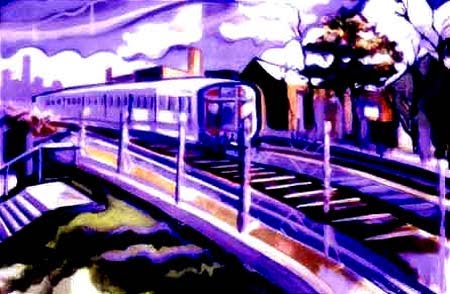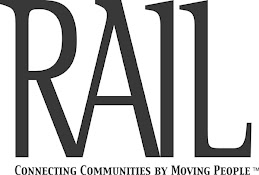Providers: Dallas Area Rapid Transit (DART); Fort Worth Metropolitan Transportation Authority (The T); McKinney Avenue Transit Authority (MATA); City of Dallas; Denton County Transportation Authority (DCTA); Dallas County Utility & Reclamation District (DCURD); Amtrak
Modes: light rail, streetcar, commuter rail, regional rail, people mover, intercity rail
Unique routes: 10, 1 Pending (4 DART Light Rail, 1 DART/The T TRE commuter rail, 1 MATA streetcar, 1 City of Dallas Streetcar, 1 DCTA A-Train regional rail, 1 DCURD Los Colinas people mover, 1 Amtrak; 1 The T TEX Rail pending)
Distinctive stations: Dallas Union Station; Fort Worth Intermodal Transportation Center; Fort Worth Texas & Pacific (T&P) Station
Equipment: DART Light Rail vehicles; DART/The T TRE trainsets; DCTA DMU vehicles; MATA streetcars; City of Dallas Streetcars; DCURD Los Colinas APT vehicles;
Dallas? Really? Surely, you jest! After snubbing Seattle-Tacoma, Montreal and San Diego, you're really going to tell me the sprawling Texas Metroplex is a more interesting place for train fans than those historic rail cities? Actually, yes.
Just perusing the number of different entities operating passenger rail networks in the Dallas-Fort Worth Metroplex returns a staggering list of modes and routes, nearly all of which has materialized since the mid-1980s. That coupled with DART's sweeping Light Rail network – the largest in the nation – propelled the region to the Top 10 in my book.
While nearly all streetcar, interurban and intercity passenger rail service in North Texas had been scrubbed by the auto culture in the 1960s and 70s, it was the launch of a couple quirky, unconnected and very different rail operations in the late 80s that lit a faint spark for passenger rail once again.
The Los Colinas Urban Center was developed in the early 1970s as a planned community intended to utilize it's location in Irving between Dallas and Dallas-Fort Worth International Airport (DFW) to serve as a center of commercial and residential activity. Those planned an automated people mover network – similar to those in Miami, Jacksonville, Detroit and Morgantown – to circulate the area's residents and employees. The Los Colinas Area Personal Transit System (APT) was opened in 1989 serving four stations on a 1.4-mile, two-branch route. Although APT service was suspended in 1993 as activity in Los Colinas waned, it returned under the auspices of DCURD in 1996.
Independent of the developments in Los Colinas, the McKinney Avenue Transit Authority (MATA) was formed in 1988 to return historic streetcars to its namesake street – and other thoroughfares – in Dallas' Uptown district. The line opened in 1989 using a mix of reclaimed Dallas streetcars and other examples from elsewhere. Although designed for shoppers, restaurant-goers and tourists, MATA operated the service as a viable transit option, with regular schedules and multiple stops, rather than a streetcar ride for the sake of it.
Meanwhile, DART was created in 1983 to merge Dallas-area bus services into a regional network and prepare for an eventual rail transit system by approving a one percent sales tax levy to build investment. It followed San Diego's early lead by selecting light rail as its mode of choice and its initial two-branch system opened in 1996. Expansions took DART trains north from downtown Dallas to reach Plano and Garland in the early 200s, while the new Green and Orange lines extended it's reach northwest and southeast in 2009 and 2012, respectively. With the extension of the Orange Line to DFW almost a year ago now, DART became the largest light-rail network in the United States (and the largest in North America if Toronto's streetcars are counted as distinct from light rail). Nearly 100,000 riders utilize the system daily. That same extension connected DART with the Los Colinas APT network on the Orange Line's Los Colinas Urban Center station, while Dallas' light-rail and streetcar networks were linked with MATA's expansion to serve DART's Cityplace subway station on the Red and Blue lines in 2000 (the only subway station in the Southwest).
Not long after the Red and Blue lines debuted in 1996 came the arrival of Trinity Railway Express (TRE) commuter rail. At its outset, Budd Rail Diesel Cars (RDCs) operated between Dallas' 1916 Union Station and South Irving station. The service utilizes a former Rock Island Railroad that the cities of Dallas and Fort Worth purchased jointly in 1983, which was ultimately transferred to control of DART and The T. Standard locomotive-hauled commuter rail trainsets emerged in September 2000 as the route was expanded west to reach West Irving, CentrePoint (offering shuttle bus connections to DFW) and Richland Hills, followed by the full competition of the line to Fort Worth's modern Intermodal Transportation Center and towering, historic 1931 T&P Station in December 2001. Today, more than 7,300 daily riders enjoy the TRE's frequent, bi-directional service, which also includes decent off-peak and Saturday service.
The most recent entry into the region's patchwork mix of rail options is the 1.6-mile Dallas Streetcar which opened for service this past April 13th. A modern counterpart to MATA's historic streetcar fleet, the line uses both conventional catenary wires for electric power along with battery power to cross the Houston Street Viaduct, the first such application of battery-powered streetcars in the western hemisphere. Although the single-tracked line means long headways for now, additional streetcars will boost frequencies on its route between Union Station (DART and TRE connections) to Methodist Dallas Medical Center. Construction is underway on an extension to the Bishop Arts District and plans for a connection through downtown Dallas to link with MATA's streetcars is in the works. DART also plans an additional route – Downtown Dallas 2 (D2) – through downtown to relieve Light Rail congestion on its main trunk line on Pacific Avenue, used by all four lines.
Further north is the A-Train regional rail line operated by DCTA between DART's Trinity Mills Orange Line station and downtown Denton. The 21-mile line opened in 2011 on a former freight rail line, initially leasing 10 Budd RDCs from the TRE and eventually acquiring a fleet of new GTW DMU vehicles from Stadler in Switzerland, similar to those used by Austin's Capital MetroRail. More than 2,000 daily passengers board at the A-Trains six stations.
The future is poised to bring even more exciting passenger rail developments throughout the Metroplex. The first to arrive will likely be The T's planned TEX Rail service from the Fort Worth Intermodal Transportation Center to DFW utilizing the former Cotton Belt rail line, which – like the TRE's Rock Island corridor – was previously purchased by local governments. And following the A-Train's example, TEX Rail will operate DMUs from Stadler but has ordered the larger four-unit FLIRT models. Construction is expected to begin in 2016 with service projected to begin in 2018. An extension to neighborhoods and communities to the south and southwest of downtown Fort Worth is anticipated once TEX Rail's initial service is underway.
DART also has plans for the portion of the Cotton Belt corridor within its jurisdiction, which would connect the Red Line in Plano and the Orange Line at DFW. Funding is not yet secured for this project, only one of a number of additional Light Rail expansions listed in its 2030 Plan.
Although current intercity service is limited to Amtrak's daily Texas Eagle between Chicago and Los Angeles (calling at both Union Station and Forth Worth's Intermodal Transportation Center), more promising is Texas Central Railway's planned high-speed rail route between Dallas and Houston. The private company – backed by interests of the Central Japan Railway Company – would connect the two mega-regions with trips of less than 90 minutes. Its terminal stations would connect with the light-rail networks of DART and Houston Metro. Metroplex regional leaders are also studying a public extension of the route to DFW and Fort Worth.
The Most Interesting North American Rail Networks Series







No comments:
Post a Comment